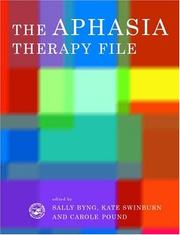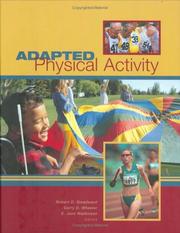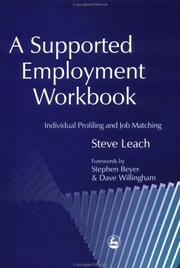| Listing 1 - 10 of 43 | << page >> |
Sort by
|
Book
ISBN: 9783945749821 3945749824 Year: 2019 Publisher: Smashing Magazine GmbH
Abstract | Keywords | Export | Availability | Bookmark
 Loading...
Loading...Choose an application
- Reference Manager
- EndNote
- RefWorks (Direct export to RefWorks)
At its heart, 'Inclusive Components' is a detailed, practical handbook for building fully accessible interfaces. The book examines common interface patterns (accordions, tables, tabs, toggles and everything in-between) through the lens of inclusion. The result is a dozen of fully accessible and robust patterns we author, plug in, and use daily. The book features 12 common UI components, broken down in detail, one by one. The in-depth explorations are meticulously illustrated and code examples culminate as bulletproof code snippets, applicable to your work right away. Plus a strategy for building accessible interfaces for your own components: all in one book.You'll learn how to build:accessible buttons and toggle buttons,navigation menus and dropdowns,keyboard-friendly tooltips,"dark mode" themes,accessible content sliders,inclusive notifications,semantic sortable data tables,accessible dialogs and modals.Table Of ContentsEach chapter tackles a single component, addressing how we might read and interact with it, and how we can make the component more reliable and robust for every single customer.Toggle ButtonsA Todo ListMenus & Menu ButtonsTooltips & ToggletipsA Theme SwitcherTabbed InterfacesCollapsible SectionsA Content SliderNotificationsData TablesModal DialogsCardsBron: https://www.smashingmagazine.com/printed-books/inclusive-components/
Website --- Webdesign --- Interface --- Gebruikersinterface --- Web sites --- Accessible Web sites for people with disabilities --- Computers and people with disabilities --- Design --- Computers and the handicapped --- People with disabilities and computers --- People with disabilities --- Accessibility of Web sites for people with disabilities --- People with disabilities and Web sites --- Web sites and people with disabilities --- Web site development --- Microformats --- Authorship
Book
ISBN: 9780323291019 0323291015 9780323239981 0323239986 032309631X 9780323096317 Year: 2015 Publisher: St.Louis (Miss.) Elsevier
Abstract | Keywords | Export | Availability | Bookmark
 Loading...
Loading...Choose an application
- Reference Manager
- EndNote
- RefWorks (Direct export to RefWorks)
It’s here: the latest edition of the one text you need to master assistive strategies, make confident clinical decisions, and help improve the quality of life for people with disabilities. Based on the Human Activity Assistive Technology (HAAT) model, Assistive Technologies: Principles and Practice, 4th Edition provides detailed coverage of the broad range of devices, services, and practices that comprise assistive technology, and focuses on the relationship between the human user and the assisted activity within specific contexts. Updated and expanded, this new edition features coverage of new ethical issues, more explicit applications of the HAAT model, and a variety of global issues highlighting technology applications and service delivery in developing countries.
Book
ISBN: 159756835X 9781597568357 9781597561624 1597561622 Year: 2007 Publisher: San Diego (Cal.) Plural Publishing
Abstract | Keywords | Export | Availability | Bookmark
 Loading...
Loading...Choose an application
- Reference Manager
- EndNote
- RefWorks (Direct export to RefWorks)
As a consequence of the disability movement, the thinking generated by the World Health Organization's classification of disability and functioning, and an upturn in concern for the long-term consequences of aphasia, it has become apparent that two distinctive pathways for the treatment of aphasia have emerged over the past decade. The first (and most traditional) involves assessment and management directed toward lessening the effects of the impairment of aphasia, while the second pathway focuses less on specific language than on the psychosocial consequences of aphasia. This unique text specifically contrasts impairment- and consequences-focused treatment with the aim of providing clinicians with a level playing field that permits them to evaluate for themselves the relative contributions that each approach provides, to evaluate their relative strengths and weaknesses, and finally to seek common ground. An opening chapter sets the scene, while the heart of the book, based on real cases, concerns five meticulously described, yet hypothetical individuals with aphasia. In each of the cases, detailed descriptions and assessment results are provided and clinical management plans, representing each approach, are presented internationally by recognized expert clinicians.
Aphasic persons --- Aphasia --- Aphasiacs --- Aphasics --- People with disabilities --- Rehabilitation --- Patients --- Afasie

ISBN: 0126256675 9780126256673 Year: 2003 Publisher: Amsterdam Academic Press
Abstract | Keywords | Export | Availability | Bookmark
 Loading...
Loading...Choose an application
- Reference Manager
- EndNote
- RefWorks (Direct export to RefWorks)
#KVHB:Non-verbale communicatie --- People with disabilities --- Means of communication. --- Augmentative and alternative communication --- Communication --- Means of communication --- Communicatie --- Communicatiestoornissen --- Communicatiestrategieën --- Communicatiestoornis --- Communicatiestrategie --- People with disabilities - Means of communication.
Book
ISBN: 1597567825 9781597567824 9781597560795 1597560790 Year: 2009 Publisher: San Diego (Cal.) Plural Publishing
Abstract | Keywords | Export | Availability | Bookmark
 Loading...
Loading...Choose an application
- Reference Manager
- EndNote
- RefWorks (Direct export to RefWorks)
This book reviews the more traditional use of augmentative and alternative communication (AAC) and expands it into the acute and critical care arenas. It is a ""how-to"" handbook filled with protocols, realistic solutions for implementation across hospital units and rich case examples that provide validation of the efficacy of AAC with the acute care population.
People with disabilities --- Communication devices for people with disabilities. --- Critical care medicine. --- Intensive care --- Intensive medicine --- Medicine --- Emergency medicine --- Intensive care units --- Augmentative communication devices --- Communication aids for people with disabilities --- Communication devices for the disabled --- Self-help devices for people with disabilities --- Augmentative and alternative communication --- Communication --- Means of communication. --- Means of communication --- University of Iowa. --- Persoon met een verstandelijke handicap --- Communicatie --- Intensieve zorgafdeling
Book
ISBN: 9780736089180 Year: 2010 Publisher: Champaign Human Kinetics
Abstract | Keywords | Export | Availability | Bookmark
 Loading...
Loading...Choose an application
- Reference Manager
- EndNote
- RefWorks (Direct export to RefWorks)
This latest edition of "Adapted Physical Education and Sport", provides you with top-quality physical education for young people with disabilities and helps them get the most out of their sport participation. This new edition is updated to keep you current with today's trends in adapted physical education and sport and includes new chapters, major chapter revisions and an increased emphasis on best practice. "Adapted Physical Education and Sport" provides physical education teachers the information they need to develop high quality programmes for people with unique physical education needs.
Physical education for people with disabilities --- Sports for people with disabilities --- 617.16 --- andersvaliden --- bewegingsopvoeding --- G-sport --- lichamelijke opvoeding --- mindervaliden --- sport --- training --- Sports for the handicapped --- Sports for the physically handicapped --- People with disabilities --- Adapted physical education --- Physical education for handicapped persons --- Education --- Sport --- Mensen met een verstandelijke beperking --- Autisme --- Persoon met een verstandelijke handicap --- Oudere --- Gemeenschap --- School --- Buurt --- Technologie --- Voeding --- Maatschappij --- Drank --- Gezondheid --- Autismespectrumstoornis

ISBN: 1135471681 1280402369 9786610402366 0203193555 9780203193556 9780863775666 0863775667 0203226364 9780203226360 9781135471682 9781135471637 1135471630 9781135471675 1135471673 9780863775673 0863775675 0863775667 9781841692708 9780203490839 9781135426538 9781135426484 9781135426521 9781138006058 Year: 1999 Publisher: Hove Psychology Press
Abstract | Keywords | Export | Availability | Bookmark
 Loading...
Loading...Choose an application
- Reference Manager
- EndNote
- RefWorks (Direct export to RefWorks)
Different from a textbook or academic journal, the File represents a collection of explicit descriptions about therapy interventions written by practitioners themselves. The description of the rationale for the therapy, the intervention itself and evaluation of outcomes are of paramount importance. Each contributor guides the reader through the thinking that they engaged in as they decided what to do, often with considerable frankness about the difficulties involved. The File will be of equal value to experienced practitioners and students alike.
Aphasia --- Aphasic persons --- Speech therapy --- Aphasiacs --- Aphasics --- People with disabilities --- Brain --- Language disorders --- Speech disorders --- Treatment --- Rehabilitation --- Patients --- Diseases --- #KVHB:Afasie --- Afasie --- Therapie --- Orthopedagogics --- spraaktechnologie --- spraakstoornissen --- afasie --- spreken

ISBN: 0888643756 1459304101 0888647794 Year: 2003 Publisher: Edmonton The University of Alberta Press
Abstract | Keywords | Export | Availability | Bookmark
 Loading...
Loading...Choose an application
- Reference Manager
- EndNote
- RefWorks (Direct export to RefWorks)
Physical education for people with disabilities --- 796.034 --- 796.034 Aangepast sporten. Adapted physical activity --- Aangepast sporten. Adapted physical activity --- Adapted physical education --- Physical education for handicapped persons --- People with disabilities --- Education --- Sport --- Gehandicapten --- Gehandicaptensport --- Lichamelijke opvoeding --- Inclusief onderwijs --- Persoon met een handicap --- G-sport --- ouder --- Technologie --- Voeding --- Maatschappij --- Drank --- Gezondheid

ISBN: 1843100525 9781846427091 9786613688521 1846427096 128077813X 0585478260 9780585478265 9781280778131 Year: 2002 Publisher: Londen Jessica Kingsley Publishers
Abstract | Keywords | Export | Availability | Bookmark
 Loading...
Loading...Choose an application
- Reference Manager
- EndNote
- RefWorks (Direct export to RefWorks)
A practical tool for all job developers, this workbook is based on the principle of developing a client-centred approach to job development. It presents strategies based on real situations and includes job analysis forms and support review charts.
Learning disabled --- People with disabilities --- LD adults --- Learning disabled adults --- Slow-learning adults --- People with mental disabilities --- Employment --- Werkgelegenheid --- Mensen met een verstandelijke beperking --- Arbeidsrehabilitatie --- E-books --- Persoon met een verstandelijke handicap --- Oudere --- Gemeenschap --- School --- Buurt --- Politiek
Book
ISBN: 9780470694787 9780470740903 Year: 2009 Publisher: Chichester Wiley Blackwell
Abstract | Keywords | Export | Availability | Bookmark
 Loading...
Loading...Choose an application
- Reference Manager
- EndNote
- RefWorks (Direct export to RefWorks)
787
Dyslexie --- Arbeidsmarkt --- Apraxia --- Dyslexics --- People with disabilities --- Supported employment --- Dyslexia --- Dyslexiacs --- Dyslexic persons --- Developmentally disabled --- Clumsy child syndrome --- Congenital maladroitness --- DCD (Developmental coordination disorder) --- Developmental coordination disorder --- Developmental dyspraxia --- Dyspraxia --- Agnosia --- Psychomotor disorders --- Patients&delete& --- Employment --- Patients
| Listing 1 - 10 of 43 | << page >> |
Sort by
|

 Search
Search Feedback
Feedback About UniCat
About UniCat  Help
Help News
News